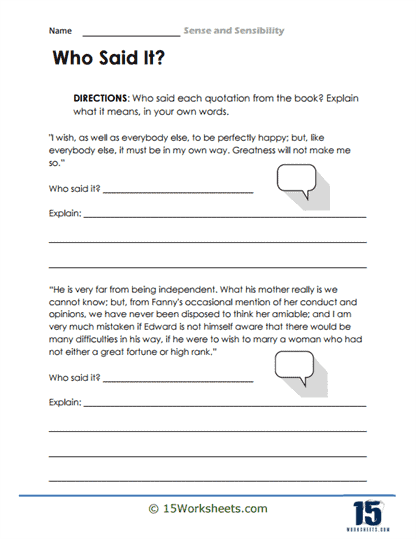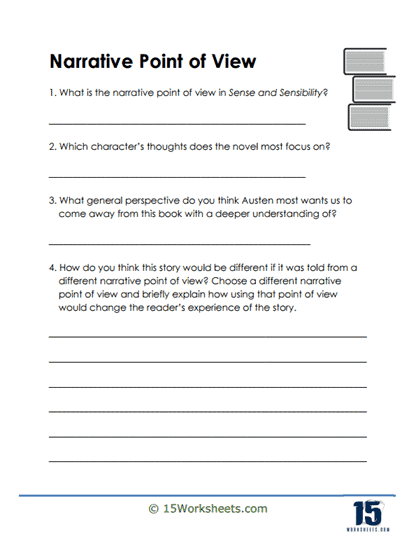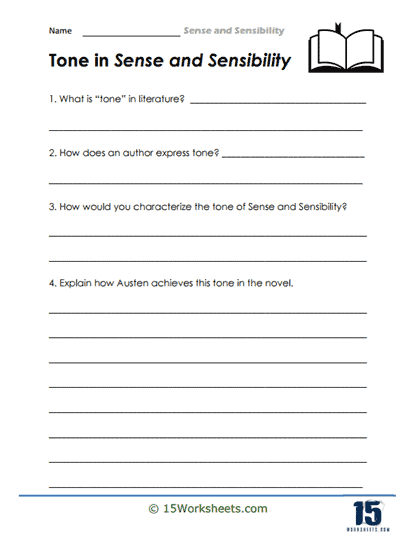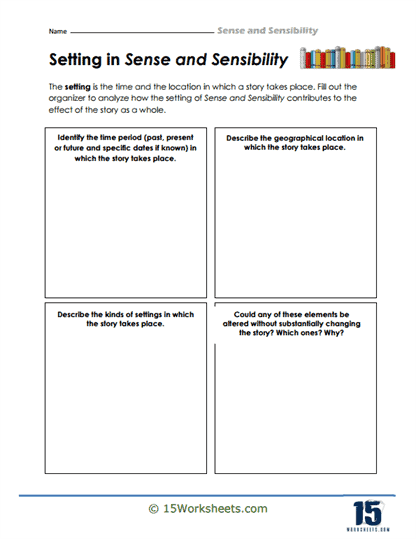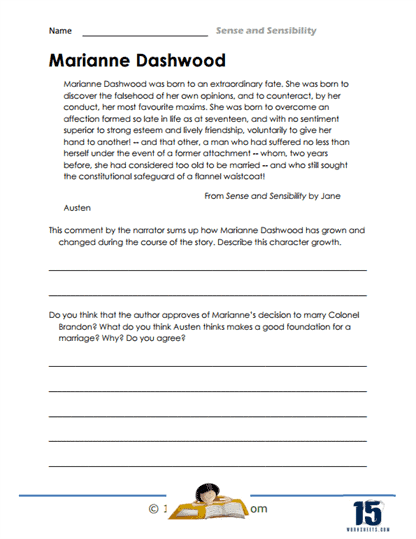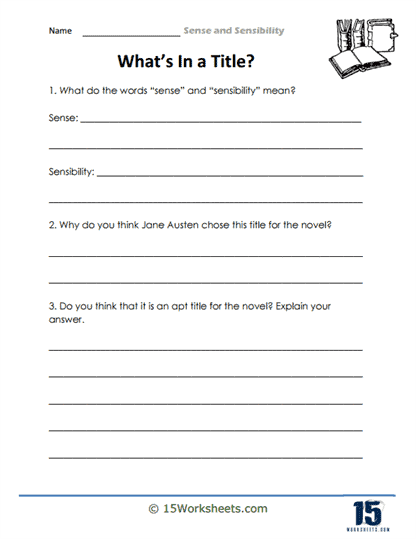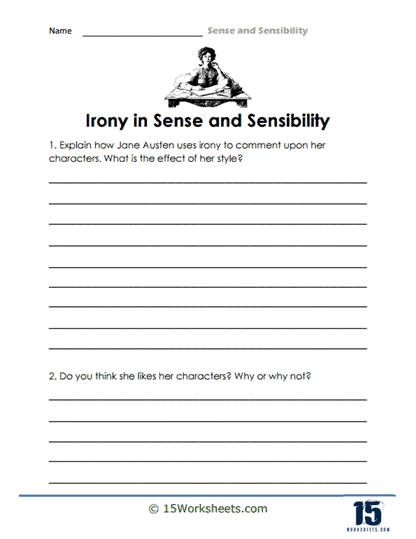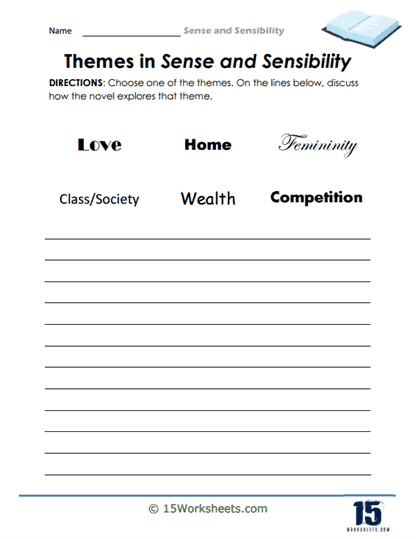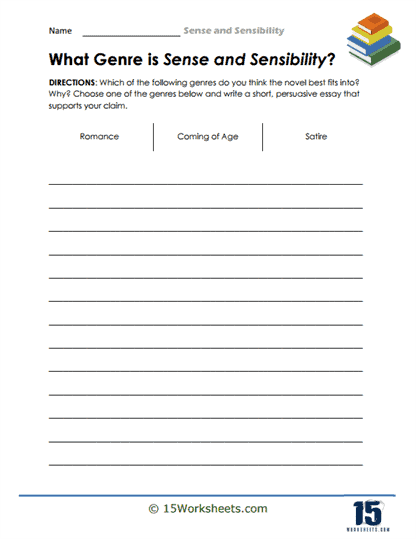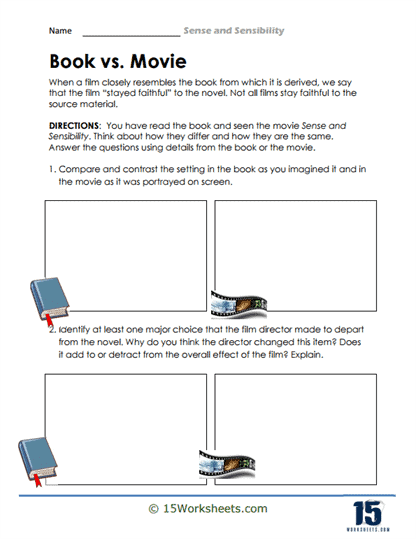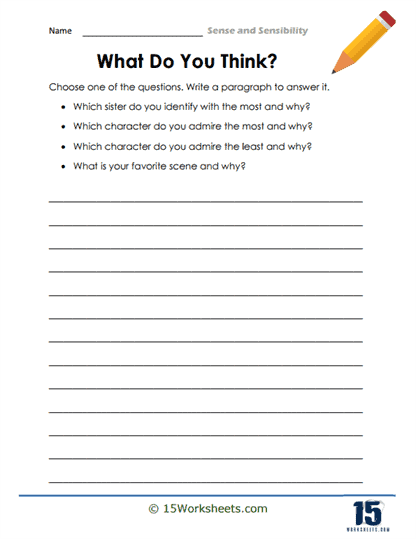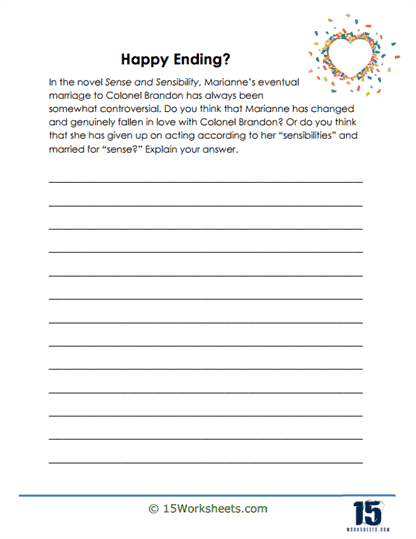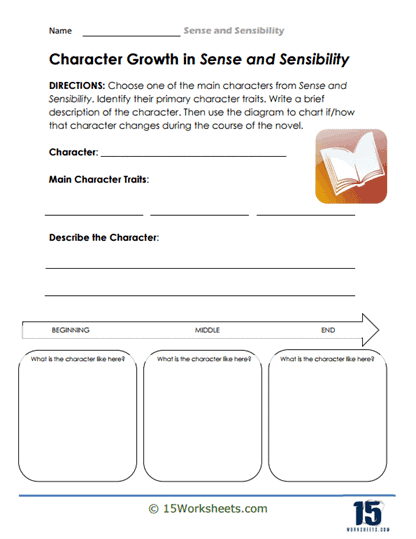Sense and Sensibility Worksheets
All About These 15 Worksheets
This collection of worksheets is an immersive and educational resource designed to introduce students to the world of Jane Austen’s beloved novel, “Sense and Sensibility.” These worksheets are crafted to engage students in various aspects of the novel, fostering a deep understanding of its themes, characters, and historical context. This resource is a valuable tool for literature educators and enthusiasts alike.
The Importance of Sense and Sensibility For Students
Jane Austen’s “Sense and Sensibility” is a literary classic that offers timeless themes and rich character development. Exploring this novel in the classroom provides numerous benefits to students:
- Literary Appreciation: Studying “Sense and Sensibility” introduces students to Austen’s wit, humor, and keen observations of human nature. It deepens their appreciation for literary craftsmanship.
- Moral and Ethical Exploration: The novel raises important questions about societal expectations, moral choices, and the consequences of actions. It encourages students to reflect on their own values and decisions.
- Character Analysis: The novel features a diverse cast of characters with complex motivations and arcs. Analyzing these characters allows students to develop empathy and a deeper understanding of human behavior.
- Social and Historical Context: “Sense and Sensibility” offers a window into the social norms, class distinctions, and gender roles of the early 19th century. Understanding this context enhances students’ historical literacy.
- Critical Thinking: Exploring the themes of sense and sensibility prompts students to think critically about the balance between reason and emotion, encouraging self-reflection.
- Language Proficiency: Austen’s elegant writing style challenges students to expand their vocabulary and improve their reading comprehension skills.
This collection of Sense and Sensibility worksheets is a valuable resource that empowers educators to introduce Jane Austen’s classic novel to students in a meaningful and engaging way. By delving into the themes, characters, and historical context of the story, students not only develop a deeper appreciation for literature but also gain insights into moral decision-making, social dynamics, and the interplay between reason and emotion. This collection of worksheets equips educators with the tools needed to guide students on a transformative literary journey, fostering critical thinking, cultural awareness, and a lasting love for literature.
Summary of the Novel Sense and Sensibility
This Jane Austen novel was published anonymously in 1811 over three volumes. The overall intention of the novel was to tell the struggles of the middle class in the 18th century while following the Dashwood sisters. The story picks up when the girl’s father passes away. Their father leaves his home to the girl’s half-brother, John. Though John was instructed to look after the Dashwood sisters, his wife convinces him to no longer fulfill those duties. The novel then explores a whole cast of romantic love interests for the young women as they move to a Cottage. These worksheets will help students better explore this novel and the intentions of the author.
Every year, the death anniversary of renowned novelist Jane Austen is commemorated worldwide. However, in a day of social media, short attention spans, and reality television shows, what makes a lady who wrote Sense and Sensibility, Mansfield Park, Emma, Pride & Prejudice, and Northanger Abbey and Persuasion in the 18th century so enduringly popular?
The answer is simple; her books are still relevant. However, if you don’t have the time to read Sense and Sensibility, you’re in luck. Here’s a summary of the novel Sense and Sensibility.
Jane Austen’s first work, Sense & Sensibility, was published in 1811, making it the author’s first published novel (1775-1817). Formerly published in 1795 as an epistolary book (novel in letters), “Elinor and Marianne” is considered the first version of the work written in its entirety. When Thomas Egerton of the Military Library at Whitehall approved the work for publishing in three volumes, the manuscript became the first volume in the series.
Austen published on commission, which means she covered the book’s costs and kept the receipts, with a portion of the proceeds going to the publisher in exchange for a fee. Although the work earned two positive reviews upon release, Austen made a profit of 140 pounds from the first printing.
By that time, only a small group of individuals, including the Prince Regent, were aware of Austen’s true identity. At the same time, the majority of the British audience only knew that the famous novel had been written “by a Lady.”
The Summary
The novel Sense and Sensibility narrates the tale of the Dashwood family, with a particular emphasis on the sisters Elinor and Marianne, who represent the personifications of good sense (common sense) and sensibility (emotionality) alternately in the novel. After their father’s sudden death, they were left with nothing, and all the saved possessions of Norland Park were left to their half-brother, John. Fanny, John’s selfish wife, dissuaded him from fulfilling his responsibility.
One day, the family of Elinor and Marianne and their mother and a younger sister relocated to Barton Cottage in the county of Devonshire, England. During a party, Marianne, outgoing and exuberant, meets Colonel Brandon, a sober and established bachelor. Even though Brandon shows an interest in Marianne, she rejects him. Instead, she falls in love with the handsome John Willoughby, who seems to be a loving partner but is an evil money hunter.
He abandons Marianne in favor of an heiress, and she finally settles down with Colonel Brandon in a good marriage. This is also when Marianne’s older sister, the wise and discreet Elinor, and Edward Ferrars, Fanny’s brother, develop a strong emotional connection. In the meantime, her feelings for him are kept hidden from the public, particularly once she learns that he has been secretly engaged to Lucy Steele for many years.
Despite Edward’s feelings for Elinor, he remains firm in his determination to keep his promise to Lucy. When Edward’s engagement is disclosed, everybody disowns him, and Colonel Brandon offers him a priest’s job to supplement his income.
Later, Elinor is informed that Mr. Ferrars has married another woman. She is astonished and happy to learn that Lucy has married Edward’s brother, Robert, even though she believes the Mr. Ferrars in question to be Edward. Elinor accepts Edward’s proposal when he arrives at Barton Cottage. And finally, Edward and Elinor get engaged.
Analysis and Reception
Sense and Sensibility contained elements that would become Austen’s trademarks: keen observation, incisive characterization, and sparkling wit. Many people believe that Austen preferred one attribute over another—sense or sensibility—or that she preferred an equal dosage of both as the finest formula for living. Following its release, Sense and Sensibility was a huge success, and it was subsequently adapted for cinema, theatre, and television.
The 1995 film version was directed by Ang Lee and starring Emma Thompson (Elinor), who received an Academy Award for her screenplay, and starred Hugh Grant (Edward Ferrars), Kate Winslet (Marianne), and Alan Rickman (Colonel Brandon). Following its critical and monetary success, the film helped to rekindle interest in Jane Austen’s books and other works of literature.


